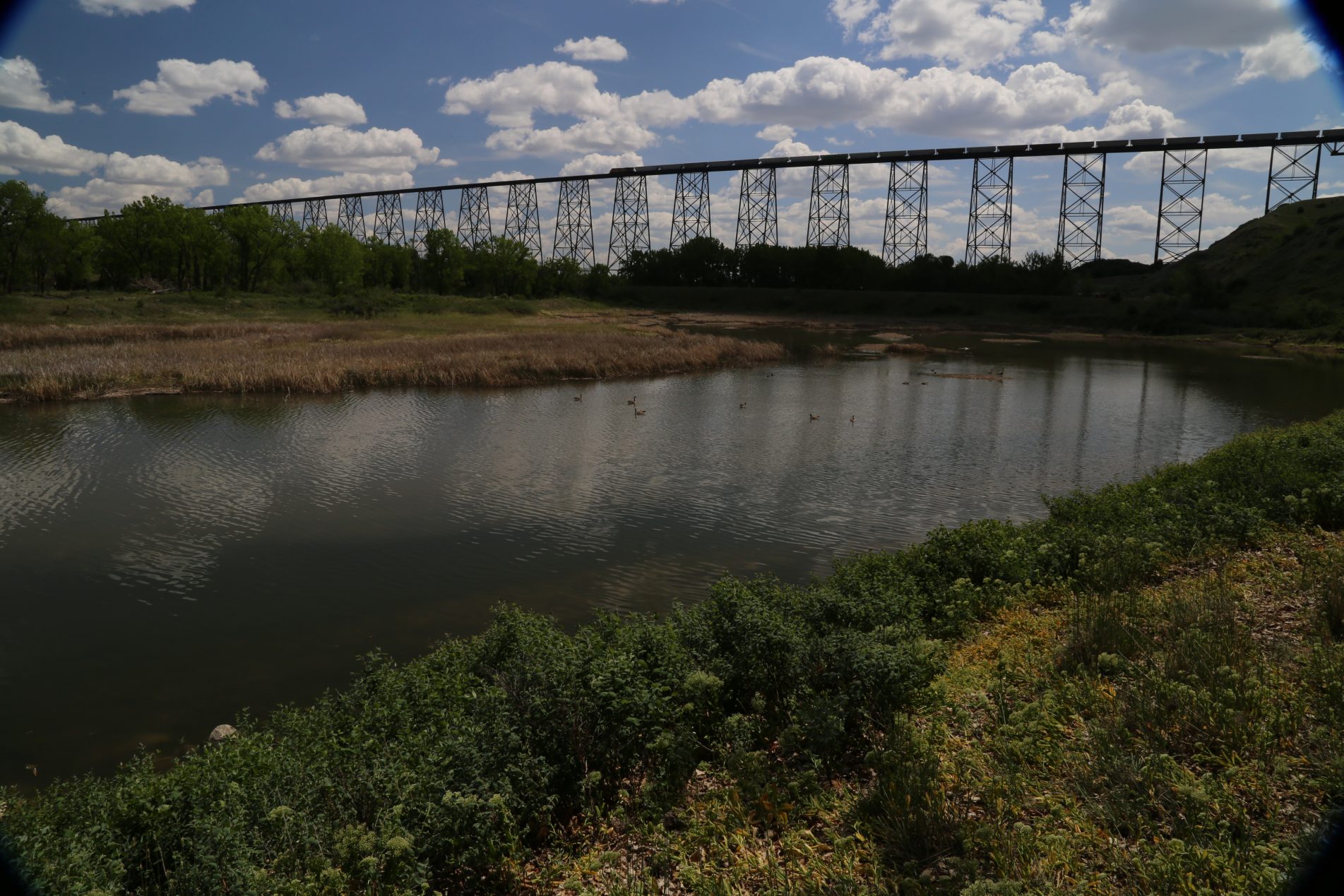Norman Henderson, Edward Hogg, Elaine Barrow, and Brett Dolter
PROJECT SUMMARY
This study investigates future climate change impacts on ecosystems, with a focus on trees, in 5 island forest sites in the northern Great Plains ecoregion: Sweet Grass Hills (Montana), Cypress Hills (Alberta-Saskatchewan), Moose Mountain (Saskatchewan), Spruce Woods (Manitoba) and Turtle Mountain (Manitoba-North Dakota). The sites are relatively small forests, isolated from other woodlands by intervening grassland. They have high nature conservation, recreational and cultural value. Their smallness, isolation, restricted number of keystone species and ecotone nature make the island forests very vulnerable to climate change.
Using 3 different global climate models (GCMs) incorporating the latest emissions scenarios we construct climate scenarios for the 2020s, 2050s and 2080s according to standard Intergovernmental Panel on Climate Change (IPCC) guidelines. From these scenarios we derive climate moisture indices (CMIs based on projected precipitation, temperature and evapotranspiration to model available moisture for vegetation growth. All GCM scenarios indicated declines in moisture levels over time. As compared to the climate normals (the baseline climate) of 1961-1990, the predicted decline in moisture availability at the 5 island forests is approximately 10 cm by the 2020s, 21 cm by the 2050s, and 32 cm by the 2080s. As moisture availability is a critical determinant of forest structure and heal that Plains forest sites, the loss of such substantial amounts of moisture is expected to have severe impacts, including the conversion of large areas of forest from trees to scrub or grass cover, the possible extirpation of some tree species, and negative impacts on biodiversity, landscape diversity, and recreational and cultural values. Landscape change maybe sudden and dramatic, via vectors such as wildfire, insect attack or severe drought. Traditional minimal-intervention management will not prevent loss of diversity and risks catastrophic and permanent landscape change. Management that aims simplyto retain existing vegetation, or to restore historical vegetation distributions and ecosystems, will fail as the climate steadily moves farther away from recent and current norms. A realistic biodiversity strategy must take into account that climate, and therefore flora, fauna, hydrology and soils, will not be static over this century. In a world of climate change, selection of protected areas may need to focus on site heterogeneity and habitat diversity (as these provide some buffer against climate change) rather than on representativeness. As well, preserving some elements of biodiversity will require increasing management counter-intervention across the landscape. Climate change is not currently considered within management plans at any of our study sites.
Given the island forests’ vulnerability and the magnitude of probable climate change impacts, we recommend an interim strategy of “managed retreat,” incorporating active, anticipatory management, as the best risk management approach. Elements of this “no regrets” strategy include aggressively controlling wildfires and other disturbances, maintaining or creating successional stand diversity, maintaining or increasing landscape diversity, and aiding regeneration of key extant species. It mayalso be necessary to introduce more drought-tolerant varieties of existing species and, in extremis, to introduce entirely new species should a key extant species prove unsustainable as the climate shifts. As the forests are isolated, in-migration of tree species or varieties better adapted to the changing climate would have to be provided by active management. Provenance trials should be undertaken to test new tree varieties and species to provide us with maximum options for ecological salvage. Zoning within each island forest will be a valuable technique allowing a differentiated response to climate change. As the management response to climate change may have to be radical compared with traditional North American nature conservation practice, extensive public consultation will be required. A binational biophysical monitoring program that looks at the entire Plains island forest archipelago collectively, rather than at each site in isolation, is strongly recommended. Also recommended is the expansion of this study north and south to encompass all island forests within the Great Plains ecoregion to determine the bounds of probable climate change, to determine island forests’ individual and collective vulnerability, and to foster knowledge transfer of best monitoring, management and consultations practice.









